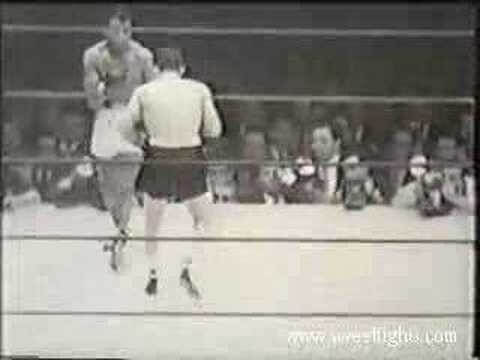R.I.P. Jake LaMotta, the real Raging Bull

Jake LaMotta has died; known as one of the most durable, ferocious boxers in the history of the sport, his life served as the basis of Martin Scorsese’s classic Raging Bull, based on his own 1970 autobiography. Renowned for his ability to take a punch, and open about the ire that drove him both inside and outside the ring, LaMotta was 95, and died of complications from pneumonia.
In the years since Scorsese’s film was released, it’s become more-or-less impossible to separate the myth of LaMotta—and Robert De Niro’s growling, transformative performance in the role—from the man, but he was once one of the great middleweight boxers of his era. Managed by his brother, Joey, he fought most famously with Sugar Ray Robinson, in a six-bout rivalry that would see Robinson served his very first defeat. LaMotta was known for pioneering a style of boxing known at the time as “bullying”: a brutal, hectoring approach that left him open to his opponent’s blows, while never giving them a moment’s breath to recover from the onslaught. In 106 fights, he was knocked down incredibly rarely; his last fall, in a 1952 match against Danny Nardico, heralded what would come to be the tail end of his career.
After leaving boxing in the mid- ’50s, LaMotta moved into the world of entertainment, working as a comedian and a night club operator. (A role that eventually caused him to be arrested and convicted of introducing men to underage girls, a charge he denied for the rest of his life.) He also worked as an actor, appearing in films like The Hustler and on the NBC sitcom Car 54, Where Are You? In 1970, he wrote Raging Bull: My Story, a frank discussion of the jealousy and resentments that drove him both in and out of the ring. When he was approached about the book being made into a film, he gave the movie his tacit approval, joining the project as De Niro’s boxing trainer.
In his own words, and, later, in the version of himself that appeared in Scorsese’s film, Jake LaMotta came to represent an inextricable aspect of the violence of his chosen field, alongside the undeniable power of endurance at any cost. The man would not go down: Not in the ring, not after getting his license suspended for throwing a fight for the Mafia in 1947, not in his personal relationships, not for anything, regardless of whether giving in, or giving up, might be the better, less self-destructive choice. Once, he was the middleweight champion of the world; De Niro remembered him today with these words: “Rest in peace, champ.”